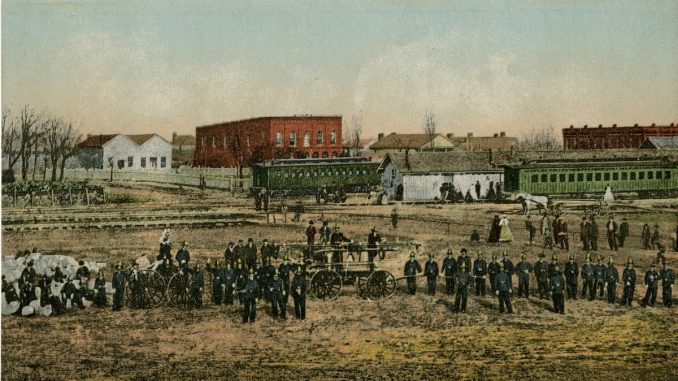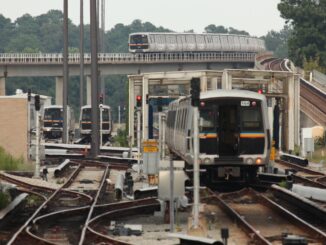
On Christmas Eve in 1842, a locomotive and a single car pulled out of Atlanta on a small portion of the state-owned Western & Atlantic Railroad, marking a new era in the city’s history. The railroad was operational.
For the historic first journey along the Western & Atlantic, the engine pulled a single car — either a boxcar or a passenger car built at the penitentiary. Most accounts name the engineer as William F. Adair, while other sources indicate Jim Rustin was at the throttle.
Moving the Motive Power to Atlanta
The locomotive on that historic journey was named Florida and was in use on the Georgia Rail Road since 1837. When the Western & Atlantic needed motive power for their line, they purchased the steamer.
The problem was there was no way to relocate the locomotive to Atlanta by rail. So, the Georgia Rail Road steamed the engine to its then terminus in Madison, Georgia. There, workers loaded it on a cart, and a team of 16 mules hauled it to Atlanta where it could enter service on the Western & Atlantic.
Steaming Out of Town
When the train reached the bridge over the Chattahoochee River, it stopped. Passengers disembarked because they feared the bridge would not support the train. They walked across the trestle; the bridge held, and the locomotive glided across “like a being of the clouds,” a letter writer to a local newspaper recalled in February 1843.
The Western & Atlantic was — at least in a small way — a functioning railroad, though it would be another three years before some semblance of regular operations began.
A Railroad City to Be
“The place appears to be well selected for the connecting of other roads with it,” the letter writer also noted. “…There is some magnificent scenery along this State Road, natural as well as artificial. To see a steam car walking like ‘a thing of life,’ through these mountains, and over rivers and creeks and ravines, is grand to look upon.”





